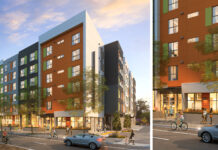 Investors armed with cash have largely driven the recovery of the U.S. housing market to date, but a few signs suggest that trend may be easing up. For the past five months, applications for new mortgages have risen, suggesting that regular buyers may be starting to play a bigger role in the housing recovery.
Investors armed with cash have largely driven the recovery of the U.S. housing market to date, but a few signs suggest that trend may be easing up. For the past five months, applications for new mortgages have risen, suggesting that regular buyers may be starting to play a bigger role in the housing recovery.
A shift would be significant. The worry has been that once home prices rise to a point where it’s not as worthwhile for investors to buy, prices could eventually drop off. But if individual buyers dominate home sales, we might see a more sustainable recovery under way.
In January, mortgage applications rose by 1.8% from the previous month – the highest level in 18 months. And during the last week of January, applications rose to the highest level since mid-2010.
To be sure, cash sales by investors haven’t let up. Colony Capital, Blackstone (BX), Waypoint Real Estate Group LLC and other firms have scoured the country from Phoenix to Atlanta for bargains. They’ve snapped up homes on the cheap, with plans to rent them out and eventually flip them for a profit when the market is right.
Roughly 20% of all existing homes are sold with cash, says Stephen Melman with the National Association of Homebuilders. That share has stayed steady for the past year. For there to be a shift in the market where individual buyers drive the recovery, cash transactions would likely have to drop to 10%.
As interest rates stay ultra low, there have been many more borrowers refinancing their homes rather than taking out new mortgages. In 2012, it’s estimated that refinances made up 71% of all mortgage originations.
However, experts expect home loans to rise as refinances decline: New mortgages are expected to increase from an estimated $503 billion in 2012 to $592 billion in 2013 and $703 billion in 2014, according to the Mortgage Bankers Association.
Individual buyers will likely play a bigger role in the housing recovery, but the pace may feel like it’s happening in slow motion. At least it’s happening.
Nin-Hai Tseng







